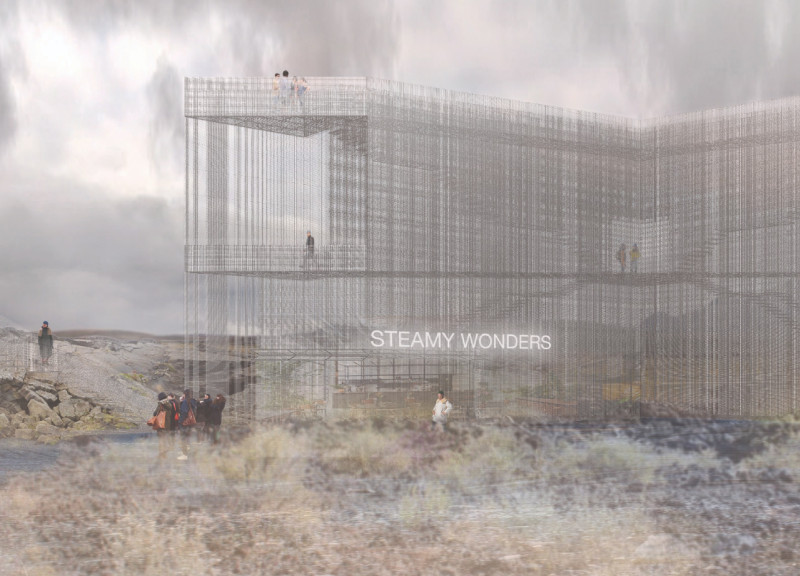5 key facts about this project
The project titled “A Cave Called Quest” integrates human experience with the volcanic landscapes of Karlagjá and Kvennagjá. Located in a region shaped by geological forces, it seeks to create spaces that engage visitors with the unique characteristics of the environment. The layout is based on a square shape, directing attention to the surrounding geography and providing opportunities for exploration.
Framing Nature
A central theme in the design is framing the natural landscape using architectural elements. The varying heights of the pavilions introduce hierarchy, capturing the visitors’ interest in the striking features of the site. In the northern section, Karlagjá stands tall, inviting exploration through platforms that offer views of the landscape, while the southern area, connected to Kvennagjá, promotes a more intimate experience for those who enter.
Engagement with the Landscape
Openings in the pavilions are carefully designed to create framed views that link indoor experiences to outdoor settings. Inside, the use of local lava rocks reinforces a connection to the geological context. This strategy not only enhances visual interest but also creates sensory experiences, encouraging visitors to interact with their surroundings in meaningful ways.
Private and Public Spaces
The northern pavilion functions as a hub for social interactions and information sharing, referred to as "Steamy Wonders." In contrast, the southern pavilion offers private spaces, including dressing rooms and showers, designed to enhance user comfort when engaging with the hot waters of Kvennagjá. This thoughtful separation allows for a diversity of experiences, catering to the needs of different visitors.
Sustainability and Biodiversity
Sustainability plays an important role in the project, focusing on the use of locally sourced materials to reduce environmental impact. Lava gravel and rocks are not only practical but also help ground the design in its setting, allowing for future adaptability as site usage changes. The inclusion of indigenous plants in the public gardens supports local biodiversity, enhancing the ecological richness of the area.
The design brings together east and west pavilions that frame an interior garden, fostering interactions with the landscape while also providing educational insights about the area’s geological history.






















































